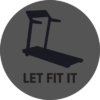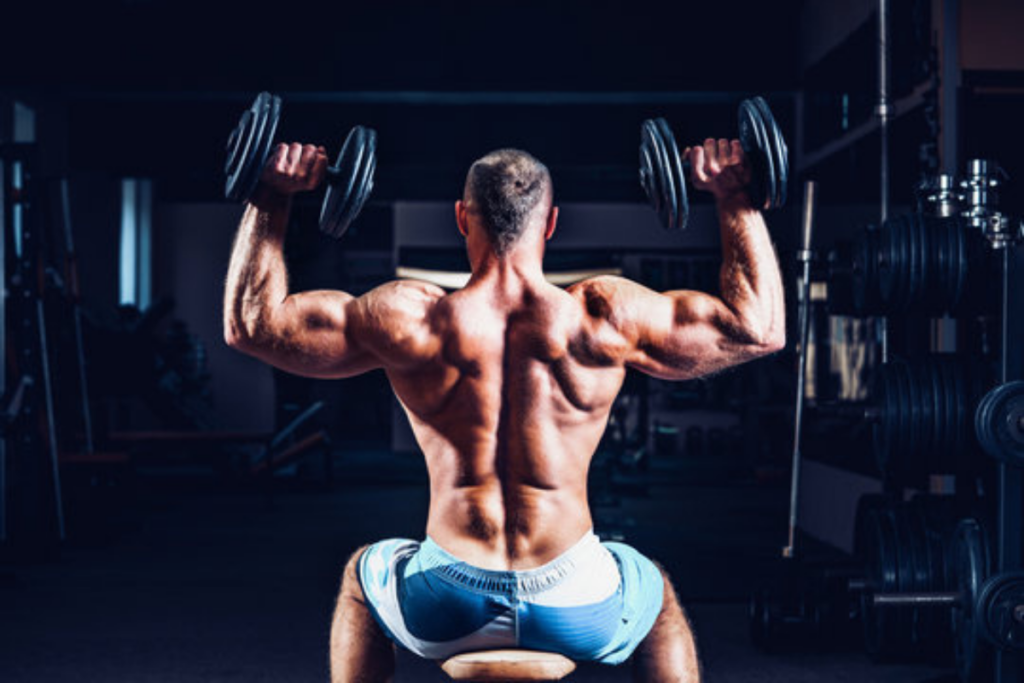Shoulder Workouts: The Foundation of Strength, Power, and a Balanced Upper Body
When I train shoulders with clients, one thing becomes clear fast most people don’t realize just how much their shoulders control everything else they do in the gym. Every push, every pull, every lift… it all runs through this one joint. You can’t bench big, press heavy, or even hold good posture without solid shoulders. That’s why any comprehensive fitness program needs focused shoulder workouts. They’re not just about looks (though, yes, a defined set of delts can completely change your physique). They’re about function. Shoulders are your anchor for strength, stability, and movement and when trained right, they make every other exercise feel smoother and more powerful.
In this guide, I’ll break down why shoulder workouts matter so much, which muscles you’re actually working, the best shoulder exercises for every level, and how to train them smart. I’ll also share a few practical coaching insights from years of working with clients who’ve gone from stiff and sore shoulders to rock-solid strength and mobility.
Why Shoulder Workouts Are Important
I like to start my clients’ programs by asking one simple question: “What happens if your shoulders give out?” Consider whether you can comfortably push, pull, carry, lift, or even sit up straight. Not exactly.
Everything is made easier by strong shoulders. Your shoulders are used whether lifting big objects, throwing a ball, or hammering out a chest workout. Your entire upper body feels steady when they are powerful. When they’re weak or tight, everything feels off.
Shoulder Strength = Everyday Power
Shoulder strength isn’t just about gym performance. It’s daily life. I’ve worked with clients who couldn’t lift a suitcase without pain and after a few months of focused shoulder training, they were pressing dumbbells overhead with ease.
When your shoulders are strong, everything just feels easier like your lifts finally click. You’re not dumping pressure into your neck or lower back anymore; the power actually goes where it should. I’ve seen it happen so many times with clients the moment their shoulders catch up, suddenly their chest work feels smoother, their back feels tighter, and they move like a different person.
Shoulder Workouts Protect Against Injury
Your shoulder joint is one of the most mobile but that also makes it one of the most fragile. If your delts, rotator cuff, and stabilizers aren’t strong enough, injuries sneak up fast: impingement, instability, or that deep ache that never goes away.
When I train shoulders with clients, I always mix strength and mobility work. You can’t just press heavy all the time. You’ve got to balance it with control, rotation, and posture. This prevents those micro-strains that lead to bigger problems later.
Shoulders Define Your Physique
Of course, we can’t ignore the aesthetic side. Well-built shoulders frame your entire upper body. They’re what give you that wide, powerful look the V-taper that makes your waist appear smaller and your body more athletic.
The secret to that look isn’t doing random shoulder presses. It’s training the deltoids from multiple angles front, side, and rear with precision and balance. When all three heads of the deltoid work together, that’s when your shoulders start to pop.
Key Muscles Targeted in Shoulder Workouts
Before we talk about exercises, you need to know what you’re actually training. When I coach new lifters, I always say: “If you don’t understand the muscle, you can’t train it properly.”
The Three Heads of the Deltoid
Your shoulders are powered by one major muscle the deltoid muscle but it’s not one solid block. It has three distinct parts, each with its own job:
- Anterior Deltoid (Front): Handles pushing movements like front raises and overhead presses. It’s what fires when you press weight in front of your body.
- Lateral Deltoid (Side): Adds width. This is the muscle that gives you that “boulder shoulder” look.
- Posterior Deltoid (Rear): Supports pulling movements and posture. It keeps your shoulders from rolling forward and balances your frame.
When I build programs, I always make sure we hit all three heads equally. Most people overtrain the front delts and completely forget about the rear ones that’s where shoulder imbalances (and pain) start.
Supporting Muscles
There’s more happening behind the scenes. Your shoulder joint is stabilized by the combined action of your scapular stabilizers, traps, and rotator cuff. Even the strongest delts cannot save you if they are weak.
Despite not being very noticeable, these tiny muscles are quite important. In addition to preventing injuries and increasing shoulder mobility, strengthening them also makes pushing motions safer and more fluid.
Internal/external rotations, scapular retractions, and band pull-aparts are some of the specific pre-hab exercises I frequently use into my client training. Even if they don’t seem like much, they have a big effect over time.
Best Shoulder Workouts for Every Fitness Level
There’s no single “best” shoulder workout. The right one depends on your fitness level, experience, and goal. But certain movements are universal they build power, size, and resilience all at once.
Here’s a breakdown of my go-to shoulder workouts and how to make them work for you.
1. Overhead Press
If I had to pick one shoulder workouts for life, it’d be the overhead press. It’s the foundation of upper body strength.
How to do it:
Stand tall, core braced, weights at shoulder level. Press them overhead in a straight line. Don’t lean back or arch your spine your abs and glutes should stay tight the whole time. Lower slowly with control.
Why I love it:
The overhead press hits your front and side delts hard while engaging your core and triceps. It builds functional power the kind that carries over into every other movement.
Coaching tip: Start light. Master your form before chasing heavy numbers. I see too many lifters arch their backs trying to move weight they can’t control. Form first, weight later.
2. Lateral Raises
Lateral rises are your greatest buddy if you want bigger shoulders.
Alright, grab those dumbbells don’t lock your arms, just a little bend, keep it loose. Now lift them out to the sides, slow, not jerky. Think elbows up first, hands follow. Stop around shoulder height no need to go higher. And don’t just drop the weights back down, control it on the way down. That’s where the magic happens that slow burn on the side of your shoulders? That’s the spot.
Why it works:
It isolates the lateral delts the muscles that make your shoulders look broader.
Trainer insight: Don’t go heavy here. Stricter control and lesser weights have produced far better results for my clients than swinging 20-pound dumbbells. It is about tension rather than ego.

3. Face Pulls
This one is a game-changer for shoulder health and posture, but it’s underappreciated.
Method: With elbows wide and high, pull the grips of a cable machine or resistance band toward your face. At the conclusion of the action, squeeze your shoulder blades together.
Why it matters:
Face pulls target the rear delts and rotator cuff. They strengthen the muscles that most people forget, balancing out all the pushing movements you do.
In practice: I make almost every client finish upper-body day with a few sets of face pulls. It keeps the shoulders healthy, improves posture, and gives that 3D roundness from the back.
4. Arnold Press
The Arnold press man, this one just hits different. I throw it into almost every shoulder day because it gets everything working at once. Front, side, rear… the whole shoulder fires up. You feel it by the second rep. It’s not some fancy move; it’s just smart. That twist through the motion makes your shoulders work in ways a normal press doesn’t.
So here’s what I tell clients: grab your dumbbells and hold them right in front of your chest palms facing in, kind of like you’re about to curl. Now, as you press up, start turning your wrists so by the time you’re fully extended, your palms are facing forward. And don’t just slam the weights back down reverse that same motion slow. Control it. Feel it. If you do it right, that last few inches will light up your delts like crazy
Why it’s effective:
That rotation hits the front, side, and rear delts together, creating a fuller shoulder. It’s also great for improving shoulder mobility and stability.
Pro tip: Control the rotation. This isn’t a fast exercise it’s a smooth, deliberate one.
5. Upright Rows
A classic compound move that works the shoulders and traps together.
How to do it:
Alright, grab the bar or dumbbells if that’s what you’ve got. Don’t overthink the grip, just keep it a bit narrow, close enough that your elbows can drive straight up. Now, pull the weight up toward your upper chest not your chin, your chest and lead with those elbows. You should feel your traps and shoulders take over right away. If it starts pulling weird on your wrists or shoulders, ease the grip a little wider.
Why it’s good:
It gives the appearance of larger, more stronger shoulders by strengthening the delts and traps.
Be careful not to stoop your shoulders or pull too high. A wider grip or a lighter weight should be used if you experience pinching.
6. Front Raises
Simple but effective. Front raises directly target the anterior delts.
Method:
Place dumbbells palms down in front of your thighs. Slowly lower them after raising them to shoulder height.
Why it’s useful:
Great for improving pressing strength and overall shoulder symmetry.
I often program these toward the end of a workout lighter weight, slower tempo, more control.
7. Rotator Cuff & Scapular Work
These aren’t “big” lifts, but they’re non-negotiable if you care about long-term progress.
Include band external rotations, Y-T-W raises, and scapular push-ups. They strengthen the small stabilizers that protect your shoulder joint and keep your lifts pain-free.
When I skip these with clients, they always feel it later. I find that shoulder ache magically goes away when I put them back in.
Tips to Maximize Your Shoulder Workouts
Over the years, I’ve learned that small details make the biggest difference in shoulder workouts. Here are some rules I live by:
- Warm up properly. Never go straight into pressing. Do some band pull-aparts, arm circles, and light rotations to get blood flowing.
- Form before weight. If your technique breaks down, you’re not building strength you’re teaching bad habits.
- Train shoulders twice a week. Once heavy and compound-focused, once lighter and mobility-focused.
- Mix push and pull. For every pressing movement, include something that pulls (like face pulls or rear-delt flys).
- Don’t chase numbers. Shoulders respond better to control and volume than brute force.
- Recover right. Sore shoulders won’t grow. Stretch, sleep, and take rest days seriously.
I tell my clients all the time “Your shoulders will grow when they’re healthy enough to handle hard work consistently.”
Sample Shoulder Workouts
Whether you’re training at home or in a gym, you may use this easy setup.
Day 1: Emphasizing Strengths
- 4 sets of 6–8 repetitions for the barbell overhead press
- Three sets of ten reps with the Arnold Press
- 3 sets of 8–10 repetitions for upright rows
- Front raises in two sets of 12–15 repetitions
Day 2: Stability and Mobility Are Stressed
- Dumbbell lateral raises in three sets of fifteen repetitions
- Face Pulls: 3 sets of 12 repetitions
- Y-T-W Raises – 2 sets of 10 each pattern
- External Rotations for the Band: Two Sets of 15 Reps
You’ll notice a change in the way your upper body moves and functions if you follow this regimen for a few weeks and pay attention to form.
Conclusion
I tell people this all the time when we’re training shoulders, it’s not about chasing that burn or just pumping out reps for the sake of it. Anyone can swing a dumbbell until their arms give out. What actually matters is control how you move, how steady you stay, how your shoulders hold up over time. That’s what builds real strength.
Once your shoulders get stronger, you start noticing little things your presses feel smoother, your posture kind of fixes itself without you thinking about it, and your upper body just feels… solid. It’s not some big dramatic change overnight, but one day you realize everything else in your workouts feels easier because your shoulders are finally doing their job.
So, yeah, grab those dumbbells, don’t rush it. Breathe through it, feel the motion. Get the reps right, not just done. When your shoulders are locked in, your whole frame your lifts, your confidence, everything starts to fall into place naturally


Pingback: Calisthenics Workout for Beginners: The Ultimate Beginners Routine